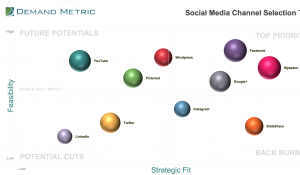The NEW Conversation Prism [Infographic] version 4.0
- Jul 11, 2013 1:06 PM
The NEW Conversation Prism version 4.0 is an evolving infographic that captures the state of social media.
It’s organized by how important social networks are used by professionals and everyday consumers.
It serves as a visual tool for brands to consider unforeseen opportunities and see the bigger picture in the evolution of social media beyond the most popular and trendy sites. It's the ONLY research map that shows the evolution of the social web dating back to the rise of social media in August 2008(link is external).
The Conversation Prism groups social networks by how people use them such as, “listening, learning and adapting.” It doesn’t show every network, but instead shows how the social web is changing and who the front runners are.
It’s intended to help in a number of ways:
- As validation to show executives that social media is not a fad and that it’s so much more than Facebook, YouTube, Twitter, and Pinterest
- Motivates teams to think about social media in new ways
- Provides an overall picture to help teams plan their next social media strategy
Have you been using the evolving Conversation Prism to keep up with the changing world of social media?
Use this to evaluate your Social Media initiatives based on their strategic fit, impact, and feasibility.



2 Responses
Looks like there's already a few things missing here:
- Instagram should also be listed in the Video area.
- When you look at how consumers use it, Twitter belongs in several areas: Q & A, Blogs/Microblogs, Social Networks, Pictures (it has its own photo hosting), and even Livecasting (through live-tweeting events).
- Facebook should also be listed in the Comments area.
- Echo also belongs in Comments and Discussion & Forums.
It's odd that it's so out-of-date, or inaccurate, considering it was just released four days ago.
Ironically enough, I blogged about the "new" Prism recently:
http://dannybrown.me/2013/07/05/why-the-conversation-prism-misses-the-bo...(link is external)
While I approached it from an influence marketing slant, I agree with Derek that it missed key platforms and kept ones that were no longer in use. I also question its value in offering strategic starting points, since all it's doing really is creating a graphic of different tools in different sectors, without really delving into the strategic relationships they might have.